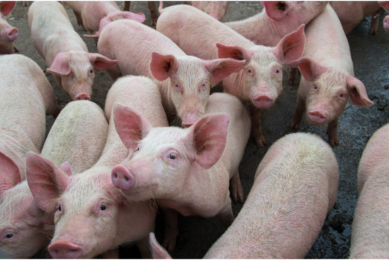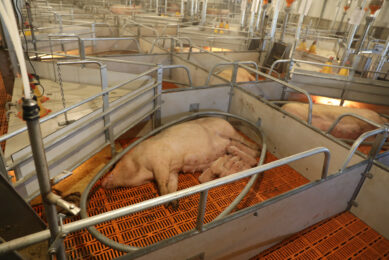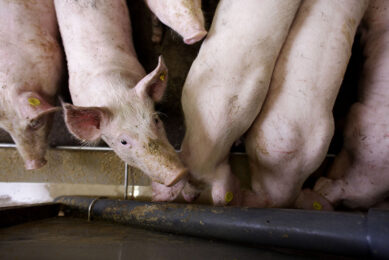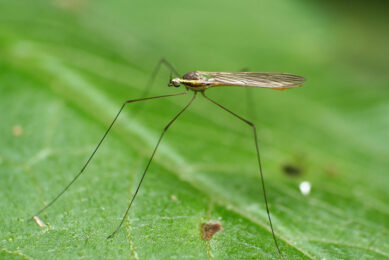What the textbooks don’t tell you about…Pigs liking people
Do pigs like people? Not such a silly question, really! Researchers Paul Hemsworth in Australia and Harold Gonyou in North America, but also others in the behavioural field like Temple Grandin who specialises in moving pigs, have spent a lot of their lives studying stockperson-pig interrelationships.
Hemsworth especially shows great ingenuity in trying to measure this scientifically and it`s effect on pig performance. He has quantified how ‘pleasant’ treatment (gentle manner, soothing voice, slow approach) contrasts with ‘adverse’ handling (noisy, rapid approach, abrupt movements, use of sticks or electric goads – now rightly banned in some countries) and how these affect performance of both growing pigs and breeding females. Sadly, not enough of this useful measurement work seems to have yet found its way into the textbooks.
What does poor pig empathy cost?
In growers, the fall-off in daily gain seems to be around 8%, an acceptable average from many trials, as far as I can see. The stress hormones being raised by as much as 30% in some trials.
Where breeding gilts are concerned, the conception rate can be as much as 50% lower between the two, with corticosteroids up by 40%.
The ‘Approach Test’
Intriguingly some of Hemsworth’s measurements are made from how long it takes for a pig to approach a stockperson standing still in a pen with whom they are familiar, or conversely are fearful of, or again, who is just new to them.
The range varies from twice as long to 14 times, with some fearful groups not approaching at all. The difference in response seems to be particularly important in a one-on-one situation such as around service time (note the 50% lower conception rate figure).
And the financial cost?
On the assumption that the extra time put into not rushing things and taking the necessary effort to get the pigs sufficiently familiar with you – and even get to ‘like’ you – then labour cost could rise by 3%.However, the benefit of one person responsible for shipping a modest 1,000 finishers/ year achieving 8% faster throughput, and each of the 50 sows he supervises producing an extra half a piglet per man, this will overtop this extra cost of the extra familiarisation time and trouble sevenfold.
That is surely why this type of work should be in all the pig textbooks.
And don’t let us forget the less stressed stockpeople too – from owner down to the ‘go-fer’.
The effects of human behaviour on the pig
The following seem to be the main points emerging from the behavioural work so far:
1. Human behaviour does seem to have a significant effect on the productivity of both growers and breeding stock. Most of you will say: “I know that!” Yes, most people are sympathetic and caring around farrowing and after, being aware of the trauma involved. However, I notice in my travels that the problem appears at the equally critical service stage where the routineness of getting the female bred – usually by AI, and the often heavy workload at this time makes for hurried and unsympathetic handling, “Oh, for goodness sake, get a move on!” etc.
2. The rise in ANS and NES stressors (see my earlier articles) just at the very time the female starts to ovulate, accepts insemination and needs to fully implant the results – all involving delicate hormonal balances which the stressors can interrupt, means that the stockperson needs to handle them especially quietly, soothingly and gently at these times (pats, strokes, tone of voice, gentle movement among them, allowing the pigs to sniff them regularly) all these are likely to improve productivity.
3. Hemsworth, 2002, said: “Stockpeople should regularly monitor the level of fear in their animals by individual responses to the ‘approach test’. In situations where the level of fear is high or rising, the attendant should re-assess his/her behaviour when near to the pigs.”
Does playing music help?
Probably. I’m all in favour of anything which encourages the pig to become familiar with its surroundings and background sounds could help?
However – a caution! In 2009, I toured some piggeries where the stockpeople played loud rock music to growers, I presume for their own benefit in their large barns, rather than for the pigs! The animals were more than usually excitable, nervous and scampered away from me in a rush, some even slamming into the back wall as I passed by the pens, showing much more disturbance than usual. I remonstrated with the owner who was with me, and noticed on my next visit a year later that the pigs then present were far more placid – loud music having been banned.
…and toys?
Pigs like dogs, are sentient beings. But very ‘aware’ animals (of what is going on around them) rather than ‘intelligent’ as so many people think they are. They prefer to be kept busy. As with dogs, they like to use their noses – in the pigs’ case by pushing and uncovering (turning over) things. So give them something to push around.
A length of plastic guttering – no sharp edges – or downpipe seems to occupy them longest, but even with this distraction they do get bored with it, so vary the objects monthly. But please, no suspended chains! These slap other pigs in the face and increase restlessness, so I’ve noticed from many hours just watching. PP











